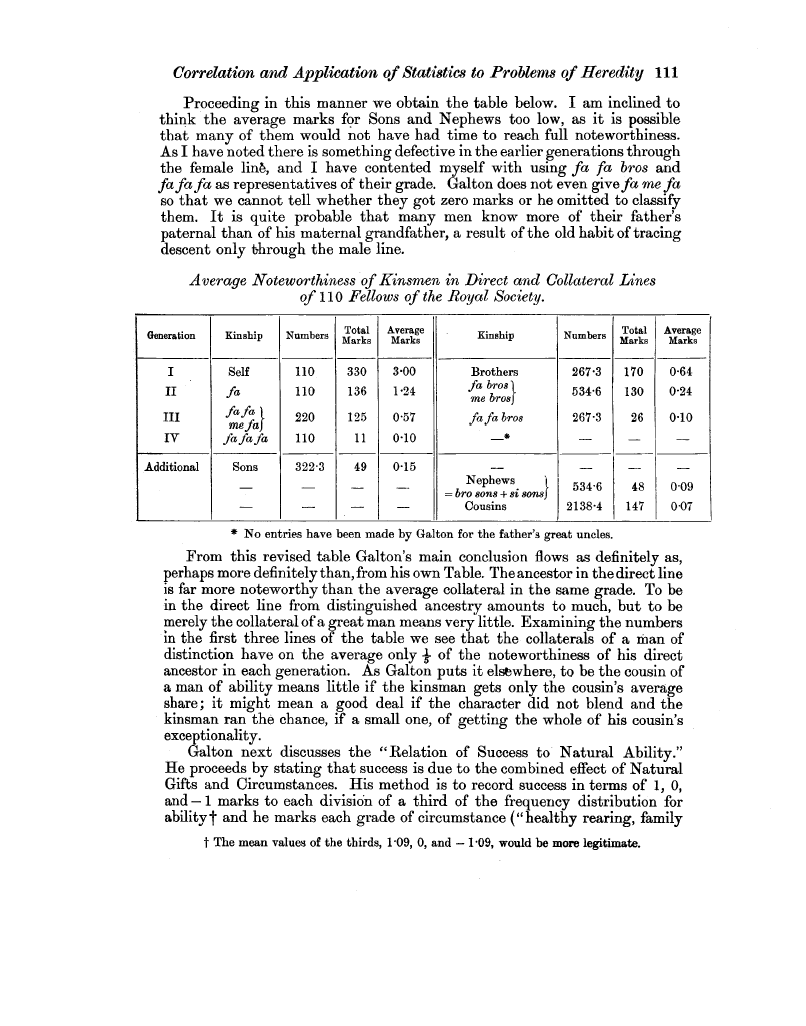| ||||||

OCR Rendition - approximate
Correlation and Application of Statistics to Problems of Heredity 111 Proceeding in this manner we obtain the table below. I am inclined to think the average marks for Sons and Nephews too low, as it is possible that many of them would not have had time to reach full noteworthiness. As I have noted there is something defective in the earlier generations through the female line, and I have contented myself with using fa fa bros and fa fa fa as representatives of their grade. Galton does not even give fa me fa so that we cannot tell whether they got zero marks or he omitted to classify them. It is quite probable that many men know more of their father's paternal than of his maternal grandfather, a result of the old habit of tracing descent only through the male line. Average Noteworthiness of Kinsmen in Direct and Collateral Lines
* No entries have been made by Galton for the father's great uncles. From this revised table Galton's main conclusion flows as definitely as, perhaps more definitely than, from his own Table. The ancestor in the direct line is far more noteworthy than the average collateral in the same grade. To be in the direct line from distinguished ancestry amounts to much, but to be merely the collateral of a great man means very little. Examining the numbers in the first three lines of the table we see that the collaterals of a man of distinction have on the average only 5 of the noteworthiness of his direct ancestor in each generation. As Galton puts it elsewhere, to be the cousin of a man of ability means little if the kinsman gets only the cousin's average share; it might mean a good deal if the character did not blend and the kinsman ran the chance, if a small one, of getting the whole of his cousin's exceptionality. Galton next discusses the "Relation of Success to Natural Ability." He proceeds by stating that success is due to the combined effect of Natural Gifts and Circumstances. His method is to record success in terms of 1, 0, and - 1 marks to each division of a third of the frequency distribution for ability' and he marks each grade of circumstance ("healthy rearing, family t The mean values of the thirds, 1.09, 0, and - 1.09, would be more legitimate.
|